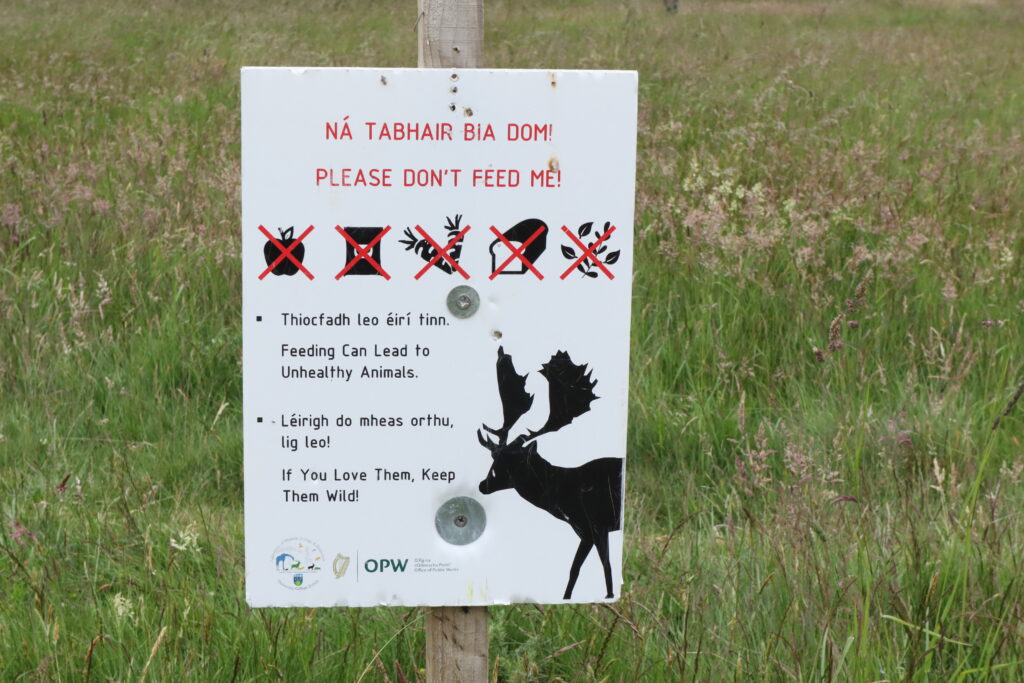Feeding wild Deer and the issues it posses
FEEDING WILD DEER
Deer can struggle with new foods as it can actually take their stomachs some time to adapt. Regular feeding can also cause deer to become unnaturally dependent on humans for food. This can lead to deer becoming a nuisance in some cases with reports of them developing aggressive behaviour.
The WILD DEER ASSOCIATION of IRELAND recommends that all deer, no matter how tame they may appear, should not be approached closely, nor should they be fed by hand or encouraged to eat any material that is not part of their natural diet.

FEEDING DEER IN GARDENS
There is really no need to feed wild deer as they can usually find all that they need naturally. Indeed, for biological reasons, it can take their stomachs some time to adapt to any new items of diet that they are not used to.
Although proprietary deer feeds are certainly available, these are primarily intended more for park or farmed deer rather than wild ones and providing any food in quantities that might develop an unnatural dependency is not recommended.
Sadly some sources suggest that you can leave out table leftovers, which should not be done as these will not suit a deer’s digestive system and might cause serious problems – the same applies to any processed food items.
Please keep in mind that encouraging deer to visit your garden may have an unwelcome effect on your other plants, and of course do be aware that your neighbours may not appreciate regular visits.
FEEDING DEER IN PARKS AND ELSEWHERE
Deer are great opportunists and some, especially those in parks or popular tourist spots, can quickly learn to overcome a natural fear of man in return for an easy mouthful or two.
Regrettably, feeding deer and other wild animals can encourage an unhealthy dependency as well as having other potential consequences.
Captive deer, even those in parks, are usually kept in numbers which their environment can support and if there is a need for any specialist supplementary feed this will be provided by their keepers.
All deer, even those accustomed to humans, are essentially wild animals. There have been instances when deer have developed unnatural levels of assertiveness after learning to accept food from human hands. This has led to reports of aggressive behaviour and even deer physically bullying people for food.
Deer under any circumstances can still be nervous animals and a sudden fright might cause them to lash out.
It may only take a slight movement of a stag or buck’s head for them to accidentally cause injury to someone standing close by. In addition, a deer’s hooves are very sharp and can be used in self-defence.
Female deer during the birthing season (May to July) can be highly defensive of new-born young. Later in the year, during the annual rut, raised levels of testosterone among male deer can also enhance the risk to members of the public who get too close.

